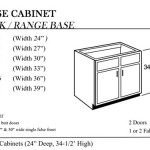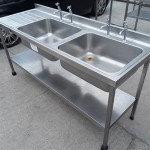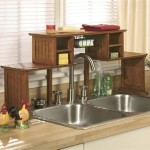Kitchen Sink Drain Smells Like Mildew: Causes, Identification, and Solutions
A persistent mildew smell emanating from a kitchen sink drain is a common household problem that can be both unpleasant and a cause for concern. This odor often indicates the presence of organic matter buildup within the drain system, fostering a breeding ground for bacteria, mold, and mildew. Understanding the underlying causes of this issue is crucial for implementing effective solutions and preventing future occurrences. Several factors can contribute to this problem, ranging from improper drainage to the accumulation of food particles and soap scum.
Mildew, a type of mold, thrives in damp, dark environments with poor ventilation. Kitchen sink drains provide an ideal habitat for its growth due to the constant exposure to water, food waste, and the limited exposure to sunlight. The resulting smell is often described as musty, earthy, or damp, and it can permeate the entire kitchen area if left unaddressed. Identifying the source and implementing appropriate cleaning and preventative measures is essential for maintaining a sanitary and odor-free kitchen environment.
Identifying the Source of the Mildew Smell
Pinpointing the precise source of the mildew smell is the first step towards resolving the issue. While the smell is most noticeable near the drain opening, the actual problem may reside deeper within the drain system. Several areas should be considered as potential sources:
The Sink Stopper: The undersurface of the sink stopper is a prime location for the accumulation of food particles, grease, and soap scum. These materials decompose over time, providing a nutrient source for mildew growth. Regularly inspecting and cleaning the stopper is a simple yet effective preventative measure. Lift the stopper and visually check for any visible buildup or slimy residue. A toothbrush and a mixture of baking soda and vinegar can be used to thoroughly clean the stopper.
The Drain Opening and Flange: The area around the drain opening, including the flange (the metal ring that sits flush with the sink), is another common site for organic material buildup. Food particles and grease tend to accumulate in the crevices and along the edges of the flange, creating a breeding ground for mildew. Use a stiff brush to scrub the area around the drain opening and flange regularly. Flushing the drain with hot water after scrubbing can help to dislodge any remaining debris.
The P-Trap: The P-trap is a curved pipe located under the sink that is designed to trap water, preventing sewer gases from entering the house. However, it can also trap food particles and other debris, which can decompose and contribute to mildew growth. While the P-trap's water seal normally prevents odors, excessive buildup can overwhelm its effectiveness. Disassembling and cleaning the P-trap is a more involved process, but it is often necessary to eliminate persistent mildew smells. This is best performed by a qualified plumber if you are not comfortable working with plumbing.
The Garbage Disposal (If Applicable): If the kitchen sink is equipped with a garbage disposal, this appliance can be a significant source of mildew smells. Food particles can become trapped in the disposal chamber, blades, and splash guard. Over time, these particles decompose and create a breeding ground for bacteria and mildew. Regularly cleaning and disinfecting the garbage disposal is crucial for preventing odor problems. Instructions for cleaning a garbage disposal are outlined later in this article.
Drainpipes: The drainpipes themselves can accumulate buildup over time, particularly if fats, oils, and grease (FOG) are frequently poured down the drain. These substances solidify and cling to the pipe walls, creating a sticky residue that traps food particles and promotes mildew growth. While less accessible than other areas, the drainpipes should be considered as a potential source of the smell, especially if other cleaning methods have been ineffective. Regularly flushing the drain with hot water and using enzymatic drain cleaners can help to prevent buildup in the drainpipes.
Effective Cleaning and Disinfection Methods
Once the potential sources of the mildew smell have been identified, implementing appropriate cleaning and disinfection methods is essential for eliminating the odor and preventing its recurrence. Several household products and techniques can be used to achieve this:
Baking Soda and Vinegar: This classic combination is an effective and environmentally friendly cleaning solution. Pour one cup of baking soda down the drain, followed by one cup of white vinegar. The mixture will fizz and bubble, helping to loosen and dislodge debris. Allow the mixture to sit for 30 minutes, then flush the drain with hot water. This method can be repeated as needed to address persistent odors.
Boiling Water: Pouring boiling water down the drain can help to melt away grease and dislodge loose debris. This method is particularly effective for addressing minor clogs and preventing buildup in the drainpipes. Exercise caution when pouring boiling water, as it can damage certain types of pipes, particularly PVC pipes. It is also important to avoid pouring boiling water down the drain immediately after using chemical drain cleaners, as this can create hazardous fumes.
Bleach Solution: Bleach is a powerful disinfectant that can kill bacteria and mold. However, it should be used with caution, as it can be corrosive and can damage certain materials. To use bleach, dilute one part bleach with ten parts water. Pour the solution down the drain and let it sit for 15-20 minutes. Flush the drain thoroughly with water. Avoid mixing bleach with other cleaning products, as this can create toxic fumes. Bleach may damage stainless steel, so test in an inconspicuous area first.
Enzymatic Drain Cleaners: These cleaners contain enzymes that break down organic matter, such as food particles and grease. They are a more environmentally friendly alternative to chemical drain cleaners and are less likely to damage pipes. Follow the instructions on the product label for proper usage. Enzymatic drain cleaners are particularly effective for preventing buildup in the drainpipes and maintaining a healthy drain system.
Cleaning the Garbage Disposal: For sinks equipped with a garbage disposal, specific cleaning methods are required. First, unplug the disposal for safety. Then, pour a cup of ice cubes and a cup of coarse salt (or baking soda) down the disposal. Turn on the cold water and run the disposal for a few seconds. The ice and salt will help to scrub the disposal chamber and blades. You can also add citrus peels (lemon, lime, or orange) to freshen the disposal. Avoid putting large bones, grease, or other hard-to-grind items down the garbage disposal, as this can damage the appliance and contribute to clogs and mildew growth. After grinding, continue to run cold water for 30 seconds to flush the particles through the drain effectively. Finally, remove and wash the rubber splash guard with soap and water to remove food debris that gets stuck on this part of the disposal.
Preventative Measures to Minimize Mildew Growth
Preventing the recurrence of mildew smells requires implementing proactive measures to maintain a clean and healthy drain system. These measures focus on minimizing the accumulation of organic matter and ensuring proper drainage:
Avoid Pouring Grease Down the Drain: Fats, oils, and grease (FOG) are major contributors to drain clogs and mildew growth. Instead of pouring FOG down the drain, collect it in a container and dispose of it properly, such as in the trash or through a grease recycling program.
Flush the Drain Regularly with Hot Water: Flushing the drain with hot water after each use can help to dislodge loose debris and prevent buildup in the drainpipes. This is particularly important after washing greasy dishes or using the garbage disposal.
Use a Sink Strainer: A sink strainer is a simple yet effective tool for preventing food particles from entering the drain. Place a strainer over the drain opening to catch food debris, and empty it regularly into the trash.
Clean the Sink Regularly: Wipe down the sink basin and faucet regularly to remove food particles and soap scum. Use a mild detergent and a soft cloth or sponge. Pay particular attention to the area around the drain opening and flange.
Ventilate the Kitchen: Proper ventilation can help to reduce humidity levels in the kitchen, which can inhibit mildew growth. Open windows or use a ventilation fan when cooking or washing dishes.
Regular P-Trap Maintenance: Periodically flushing the P-trap with hot water and a small amount of dish soap can help to prevent buildup. Consider disassembling and cleaning the P-trap every few months to remove any accumulated debris. As stated previously, if you are not comfortable performing this task, it is best left to a qualified plumber.
Consider Professional Drain Cleaning Services: For persistent or severe mildew problems, professional drain cleaning services may be necessary. Plumbers have access to specialized equipment and techniques that can effectively remove stubborn clogs and buildup in the drainpipes. Hydro jetting, for example, uses high-pressure water to clear out drain lines and can be very effective for removing grease and other stubborn debris. Camera inspections can also be beneficial to determine the exact location and cause of the clog or odor.

How To Remove Musty Odors From Kitchen Sink Water Damage

Deodorize A Kitchen Sink That Smells 5 Ways Youtube

How To Clean A Stinky Sink Drain

How To Remove Sink Odor With Baking Soda And Vinegar Zep Drain Defense Prevent

Why Is There A Smell Under My Sink

How To Clean Up Mold From Your Sink Drain Steps The Ultimate Crew Inc

What Causes Black Mold In Sink Drains How To Get Rid Of It

How To Get Rid Of Musty And Mildew Smell In Kitchen Sink Drain

How To Clean A Smelly Drain Liquid Plumr

How To Clean A Smelly Drain Easy Diy Fixes For Foul Odors







